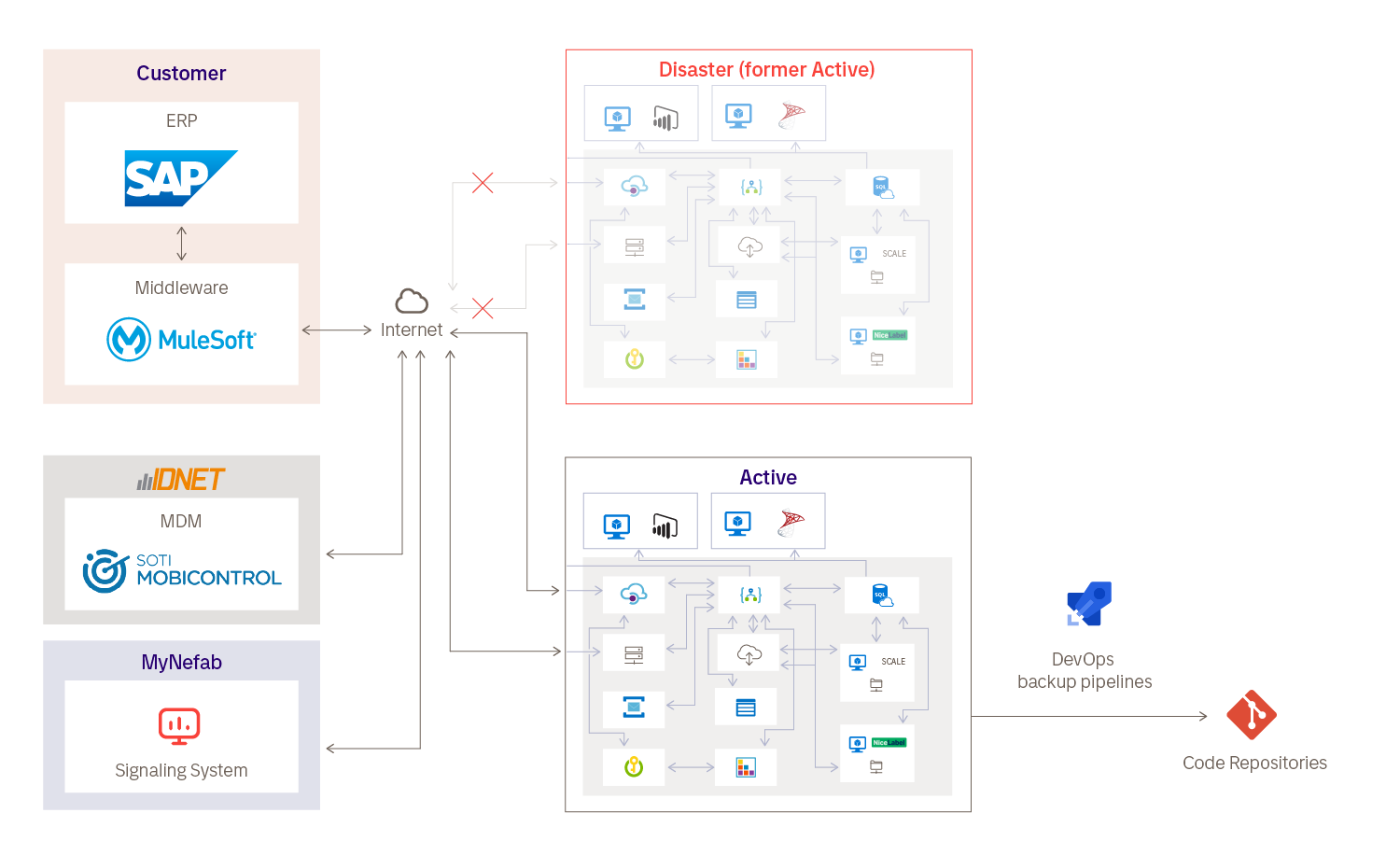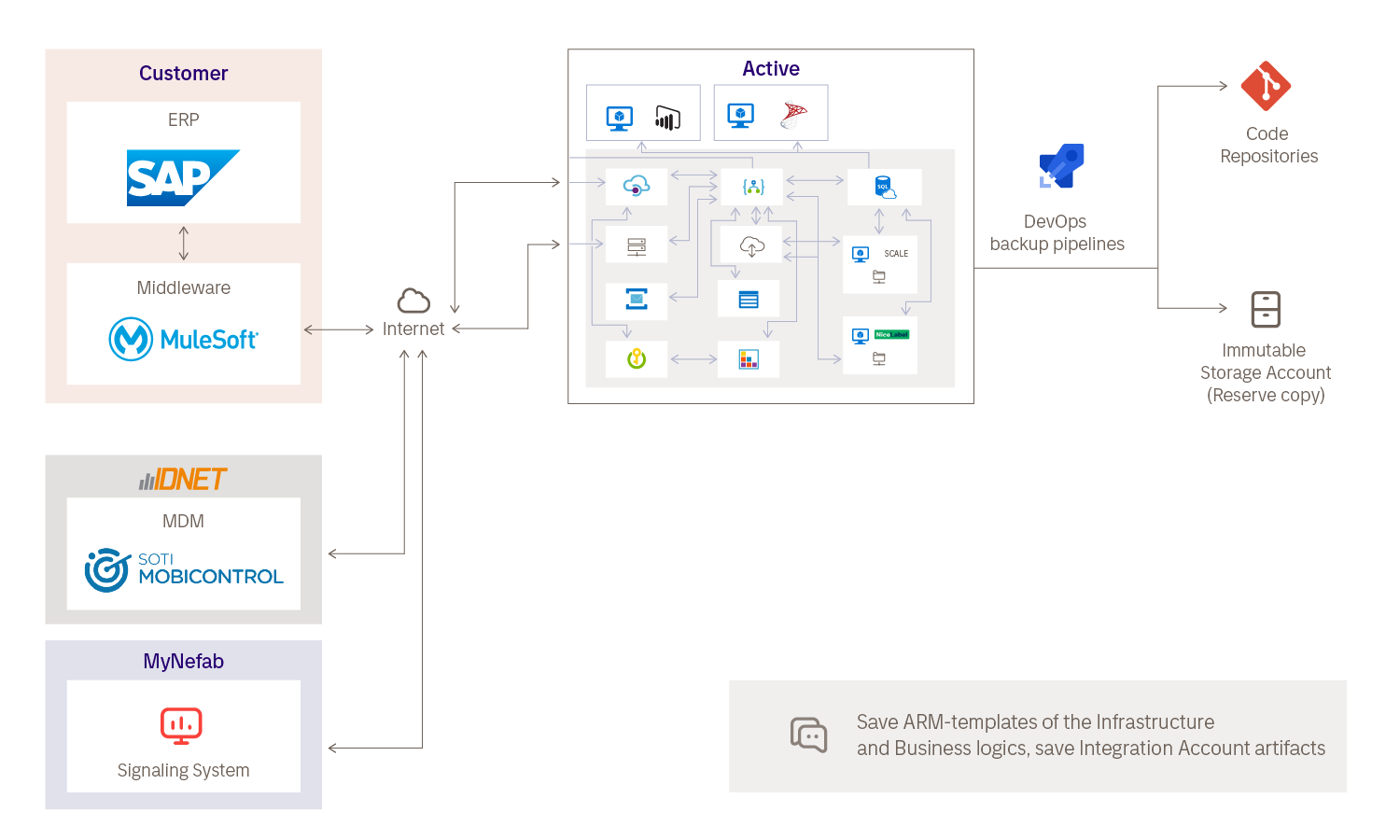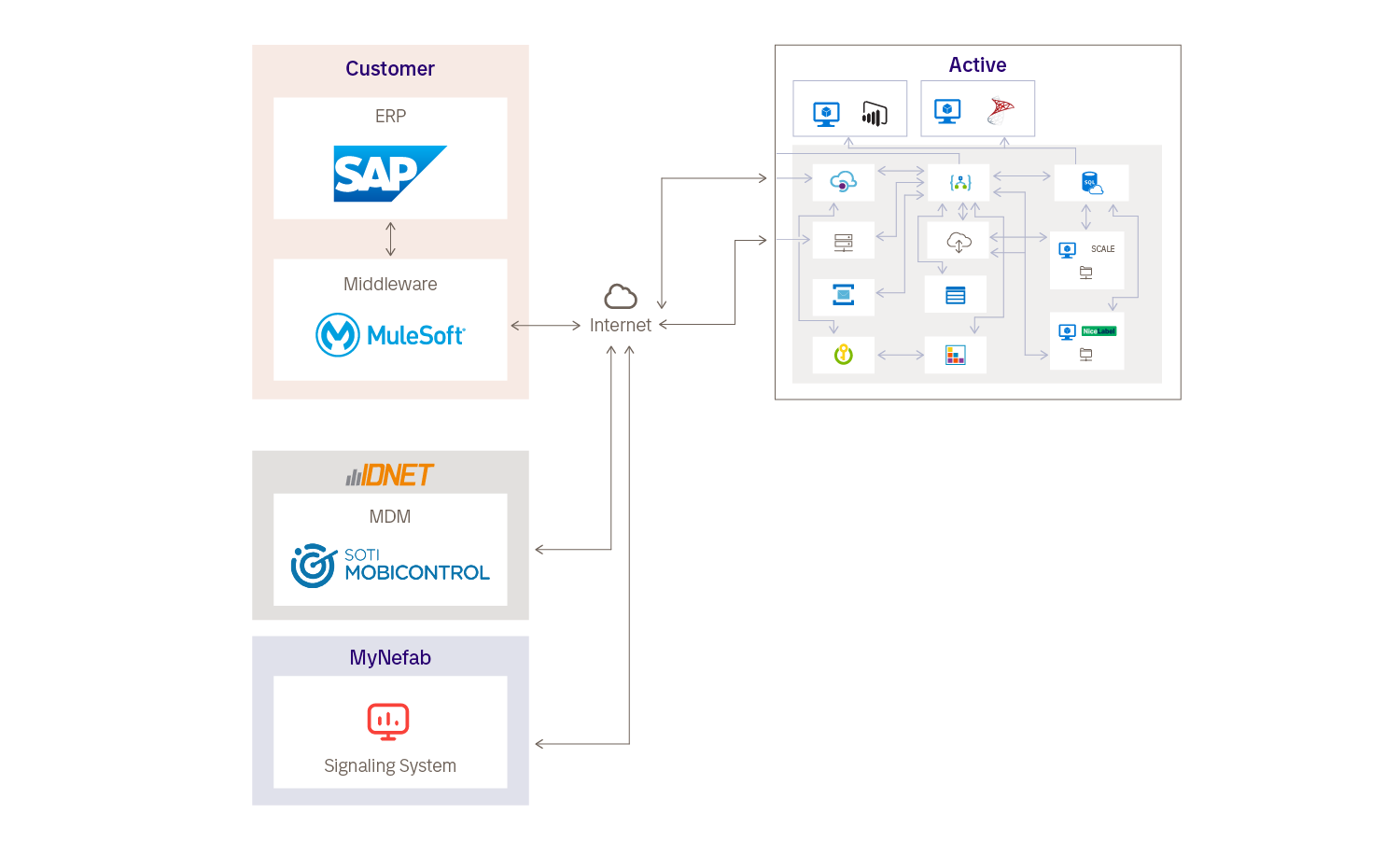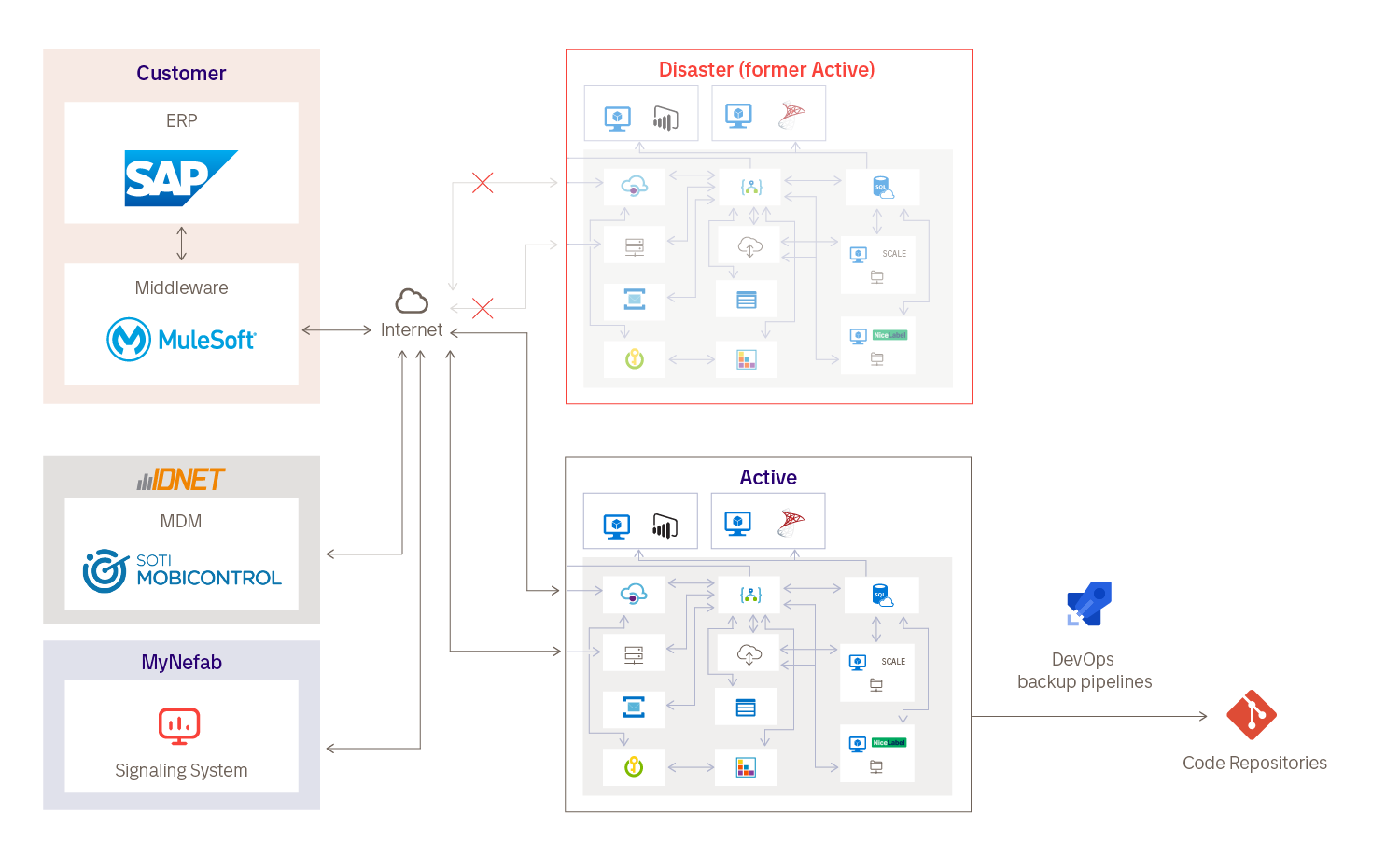
Disaster Recovery for a Multinational Logistics Company
Discover how we implemented disaster recovery for the integration framework of a global logistics company

Marketing & Communication Lead Sweden, Tietoevry Create
Executive Summary
Goals: Our client sought to safeguard ITS cloud-based operations, ensuring business continuity by mitigating data losses and system failure risks.
Solution: Delivered a disaster recovery solution, ensuring uninterrupted operations through a cloud-native disaster recovery strategy with Azure-specific DRaaS solutions, and automated pipelines for backup and restoration.
Benefits: Through the new solution, our client gained enhanced continuity, cost-efficiency, infrastructure strength, and financial savings, bolstering its industry reputation.
Services Delivered: Microsoft Azure Solutions, Cloud Services, Infrastructure Operations, DevOps on Azure
About the Client
Our client, a globally recognized leader in customized packaging and logistics solutions based in Sweden, operates in 35 countries with 80 sites worldwide. Committed to sustainability and customer-centricity, the company remains at the forefront of packaging technology and industry trends.
- Client: Multinational Logistics Company
- Cooperation Period: Since 2020
- Location: Sweden
- Industry: Logistics and Supply Chain
- Employees: 4,500
Business Challenge
Amidst substantial growth and acquisitions, our client confronted the challenge of centralizing data management and communication across diverse systems. To address this, they engaged in a partnership with Tietoevry to create an integration platform, and later, in 2020, expanded this partnership to include one of Tietoevry’s subsidiaries for developing a disaster recovery framework. Given the potential risks associated with data losses and system failures, disaster recovery emerged as a proactive measure to safeguard the client’s cloud-based operations.
Solution & Business Value
Prior to implementing Disaster Recovery, our client was in search of a comprehensive infrastructure protection solution. While they had partially implemented pipelines to preserve certain services, some of their integrations remained vulnerable.
The Disaster Recovery strategy addresses various potential failures, including:
- Warfare or geopolitical conflicts
- Physical damage to infrastructure
- Natural disasters
- Redundancy issues affecting data centers
- Accidental resource deletion or data loss
Therefore, the implementation of Disaster Recovery solution has delivered significant business value to the client:
- By incorporating failover capabilities as a part of the solution, we ensured that the client's operations could seamlessly transition from their primary system to a secondary or backup system in the event of a failure or disaster.

Seamless Transition with Failover
- Rational resource management resulted in cost savings, making resource allocation more efficient, as failover infrastructure does not exist until it is deployed by the pipelines during recovery.
- An infrastructure audit prepared the client for recovery and helped resolve pre-existing issues, further strengthening their system.
- The client's ability to operate seamlessly during disasters has made them more attractive to customers, bolstering their reputation in the industry.
Overall, our approach revolved around the automated provisioning of infrastructure using saved configurations, demonstrating its benefits of cost-effectiveness and, at the same time, satisfying Recovery Point Objective (RPO) and Recovery Time Objective (RTO) requirements. Considerations of RPO & RTO were central to the planning process – both being vital aspects for our client.
Throughout this project, the pivotal role of continuous collaboration was evident. Beyond merely supplying tools, the project involved the establishment of streamlined processes and the implementation of regular audits. These actions were undertaken to consistently enhance the client's infrastructure, thereby fortifying its robustness and resilience.
Technical Details
The idea to incorporate disaster recovery into the integration framework was initiated by the client, who recognized the need to fortify their infrastructure and ensure seamless business operations. In response to this client-driven initiative, we stepped in to offer a comprehensive solution that involves both a Disaster Recovery Strategy and a Disaster Recovery Solution. This collaborative approach was meticulously designed to address the client's specific requirements and enhance their resilience, particularly in the context of their cloud-based operations.
Disaster Recovery Strategy
The strategy encompasses three key aspects:
- Planning: Thorough preparation for disaster recovery, which includes infrastructure audit, workflows and service connection audit, used backup solutions audit, gathering requirements, outlining strategies.
- Implementation: Precise execution of the recovery process, ensuring a seamless transition to backup systems.
- Testing: Regular testing and validation of the recovery procedure to guarantee its effectiveness and reliability.
Disaster Recovery Solution
The implementation of disaster recovery involves a thorough analysis of the client's resources. This analysis not only identifies but also resolves vulnerabilities within their systems and services, which significantly bolsters the overall robustness of the client's infrastructure.
Our proactive response to the client's concerns regarding potential data loss, system failures, and unforeseen disasters, combined with the technical expertise, resource analysis, and comprehensive strategy, culminated in the creation of a tailored Disaster Recovery solution, comprising two vital components:
- Disaster Recovery Backup Pipeline: An automated CI/CD pipeline that periodically generates backups of all integration services within accessible subscriptions. It operates seamlessly without human intervention when adding new resources to the backup.

Disaster Recovery Backup Pipeline
- Disaster Recovery Restore Pipeline: Designed for the recovery process, this pipeline can restore the entire infrastructure or specific components based on configurations saved by the Disaster Recovery Backup Pipeline.

ActiveNoDR – for initial state

ActiveDR – for recovery
The integration of disaster recovery into the client's infrastructure was achieved through an automated approach, making it an integral part of their IT setup. We used the following technologies and tools for the Disaster Recovery solution:
- PowerShell and Azure API: Utilized for analysis and automation, enabling efficient disaster recovery processes.
- Azure DevOps CI/CD Pipeline: Facilitated continuous integration and continuous deployment for seamless updates.
- Azure Boards: Supported project management and tracking for streamlined disaster recovery management.
In contrast to traditional passive region maintenance, the solution employs automated templates that activate the entire infrastructure only when necessary. This streamlined approach minimizes costs and optimizes recovery time, ensuring high efficiency in disaster recovery. Also, the delivered disaster recovery plan is uniquely tailored to the client's needs, allowing them to define their Restore point objective (RPO). This critical parameter dictates the acceptable data loss and allowable downtime during a disaster for the client.
Throughout the project, our approach strictly adheres to the Azure Well-Architected Framework principles, ensuring that disaster recovery seamlessly integrates into the client's infrastructure. This is a critical aspect in cloud-based operations, where business continuity is paramount.
To sum up, our success in delivering a robust solution hinged on the fundamental principle that disaster recovery is not a one-size-fits-all remedy. Instead, our approach places a strong emphasis on gaining profound insights into the client's business logic. This in-depth understanding formed the bedrock for crafting a tailored strategy and solution that harmonizes seamlessly with the client’s distinctive needs and requirements.
Technologies & Tools:
- Microsoft Azure
- Power Shell
- Azure API
- Azure DevOps
- Azure Boards
- Agile